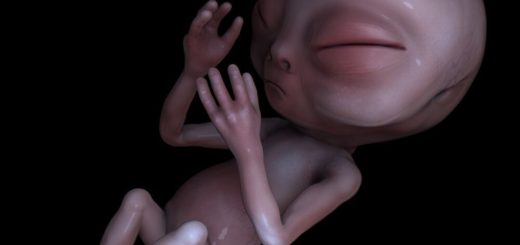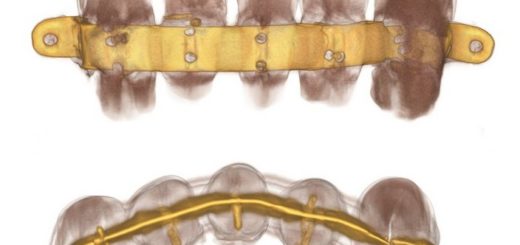Our World Is A Conceptual Prison And We Only See Glimpses Of Reality – Scientist Says
-When you read this, you’re looking at your computer screen, mobile phone or tablet. You think that you see everything there is to see. But what if that’s not the case?
Is it possible we only see glimpses of reality? A cognitive scientist has put forward an intriguing theory suggesting that we live in a conceptual prison and only see glimpses of reality. This would mean that reality as we perceive it may only be a tiny fraction of true existence.

There are some scientists, like Dr. Joe Dispenza, D.C who claim that your thoughts create your reality.
Dr. Dispenza who is a neuroscientist and author of several books such as for example Evolve Your Brain: The Science of Changing Your Mind said that he during his research into spontaneous remissions, discovered and continually sees, similarities in people who have experienced so-called miraculous healings – showing that they have actually changed their mind, which then changed their health. In other words, what you think can affect your health.
Recent studies in neuroscience have shown we can change our brain just by thinking.
The concept is interesting, but what happens of we do not perceive all of our so-called reality?
Researchers at the University of Amsterdam suggest that what you see is not real – it’s a visual illusion.
The findings suggest that even though our peripheral vision is less accurate and detailed than what we see in the center of the visual field, we may not notice a qualitative difference because our visual processing system actually fills in some of what we “see” in the periphery.
“Our findings show that, under the right circumstances, a large part of the periphery may become a visual illusion,” said psychology researcher Marte Otten from the University of Amsterdam.
Cognitive scientist Donald Hoffman, University of California has spent 30 years trying to unravel the mystery of our perception. He is convinced that evolution and quantum mechanics conspire to make objective reality an illusion.
Hoffman uses the evolutionary game theory to show our perception of reality is flawed.
“Evolution has shaped us with perceptions that allow us to survive. But part of that involves hiding from us the stuff we don’t need to know. And that’s pretty much all of reality, whatever reality might be,” Hoffman said.
“Evolution isn’t about truth, it’s about making kids. Every bit of information that you process costs calories, meaning that’s more food you need to kill and eat. So, an organism that sees all of reality would never be more fit than one tuned only to see what it needs to survive,” he adds.
Hoffman says he became interested in the subject of reality as a teenager. He wanted to find out if humans are machines and eventually in the 1980s he went to the artificial intelligence lab at MIT and worked on machine perception.
He has developed the theory of conscious agents to solve the combination problem of consciousness, both for the combination of subjects and of experiences, but Hoffman does not think we are machines.
According to Hoffman there’s no reason to believe that the objects that we see have any correspondence to things that exist outside our minds.
“The standard view of vision is that we’re akin to cameras, taking an image from light reflected off an object,” he explains. “But billions of neurons and trillions of synapses are involved between light hitting the retina and the construction of the 3D objects that we perceive.”
Hoffman says there are two inconsistencies in our perceptually-derived view of the Universe that may offer clues into the structure of reality beneath. The first: our inability to explain conscious experience, for example, how we get the sensation of what it is like to taste chocolate from the physical material of neurones and chemical messengers. The second: interpretations of quantum mechanics in which states of a particle are indefinite when unobserved – something that calls into question our assumption of objects continuing to exist whether or not anyone is looking at them.
Reality, according to Hoffman, is a network of conscious agents and by studying the dynamics of this network we can understand how its interactions build up to the perception that we have of a physical world.
With the help of mathematics, a recognition of the existence of this perceptual prison brings a freedom to form new theories about the world beyond it. Hoffman identifies two inconsistencies in our perceptually-derived view of the Universe that may offer clues into the structure of reality beneath.
The first: our inability to explain conscious experience, for example, how we get the sensation of what it is like to taste chocolate from the physical material of neurones and chemical messengers. The second: interpretations of quantum mechanics in which states of a particle are indefinite when unobserved – something that calls into question our assumption of objects continuing to exist whether or not anyone is looking at them.
More and more scientists are seriously discussing the nature of our reality. The Holographic Universe theory is becoming very popular.
One scientists suggested our reality is a hologram controlled by an evil genius.
A NASA JPL scientist said that our creator is a cosmic computer programmer and there are even researchers who say they have found evidence our Universe is a big 2D hologram and we are an illusion.
All these theories are though-provoking and many studies must be conducted before any conclusions can be reached.
Perhaps it really doesn’t matter right now whether we call our world a conceptual prison or a hologram. What matters is that we still cannot determine how much of reality we really perceive, and many would say we cannot even define the term “reality”.



 Creators of mankind
Creators of mankind Description of “Tall white aliens”
Description of “Tall white aliens” Where they came from?
Where they came from? About hostile civilizations
About hostile civilizations The war for the Earth
The war for the Earth “Tall white aliens” about eternal life
“Tall white aliens” about eternal life Video: “Nordic aliens”
Video: “Nordic aliens” Aliens
Aliens Alien encounters
Alien encounters The aliens base
The aliens base UFO
UFO Technology UFO
Technology UFO Underground civilization
Underground civilization Ancient alien artifacts
Ancient alien artifacts Military and UFO
Military and UFO Mysteries and hypotheses
Mysteries and hypotheses Scientific facts
Scientific facts


















